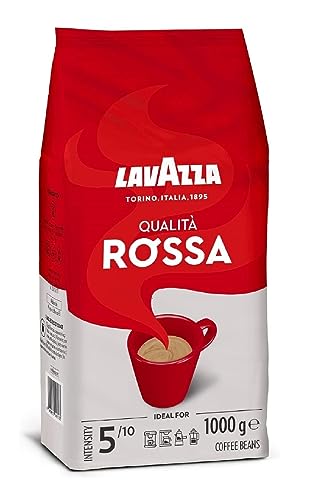20 Trailblazers Lead The Way In Coffee Beans Types

Coffee Bean Types: Arabica, Robusta, Liberica, and Excelsa
You probably already know that different types of plants produce different flavors. Learn more about four of the most sought-after varieties: Arabica, Robusta, Liberica and Excelsa.
Excelsa beans are a variety of Liberica that is cultivated exclusively in Southeast Asia. They have a sweeter and tarter flavor, and are often added to coffee blends to add depth.
Arabica
Arabica is the most sought-after coffee worldwide, making up 75% of the global coffee beans produced. Arabica beans have a sweeter and less sour flavor than Robusta. They are available in a variety of flavor profiles. The flavor and aroma of coffee is affected by the conditions in which it is grown as well as the processing methods used.
The word "coffee" originates from the Arabic word meaning the berry. Coffee beans are actually seeds which grow in bright red berries. expensive coffee beans Coffeee is believed that the ancient Ethiopian shepherds discovered that their goats became stimulated after eating these berries, and that the cultivation of coffee quickly began to spread throughout the world.

Coffee beans can be grown at higher altitudes, and they are capable of flourishing in cold temperatures and plenty of rain. This is why Arabica coffee is considered to be the best tasting type of coffee.
Many specialty coffee roasters and shops concentrate on sourcing their arabica beans ethically and focusing on fair pay for farmers and sustainable cultivation practices. These companies blend arabica beans in order to create unique specialty coffees that are suitable for different brewing methods. Blending can be used to control the flavour, aroma, body, and acidity of the coffee. It is typically preferred to create a balanced and consistent taste that appeals to a larger market.
Robusta
Robusta beans are the second most sought-after kind of coffee bean around the world. They have more caffeine per bean and are more resistant against diseases and pests. They also contain higher levels of chlorogenic acids, which are antioxidants that occur naturally. However, these acids may cause oxidation during the coffee brewing process and may result in undesirable flavors.
The plant is more resilient than the arabica and may thrive in less favorable conditions. It can withstand temperatures that are higher and does well in direct sun. It grows faster and produces more coffee per plant than arabica, making it a cheaper crop to grow.
While it may seem counterintuitive the fact is that arabica and Robusta beans are often blended to make coffee blends. If you see names such as Uganda or Kenya on a coffee bag it's possible that there is also some robusta.
While some roasters exclusively use arabica beans, the majority of roasters use combine the two varieties to cut cost and maintain the quality. To maintain the integrity of the flavor, it is essential to select a high-quality bean from a source you can trust. The best way to do this is to buy your beans directly from the farmer.
Liberica
Liberica beans have a shape that is similar to a football, that makes them different from other coffee beans. They have a distinctive aroma that is floral and fruity with smoky undertones. They are often paired with other coffee bean varieties to add an extra, stronger flavor.
Liberica coffee beans are grown in West Africa and Malaysia (Borneo) as well as in Southeast Asia. They are adaptable to humid, hot climates and can thrive at low altitudes. They also have a much better resistance to diseases than Arabica and Robusta.
These qualities make them perfect to grow at home. The seeds can be found on the internet from a variety of sources, however it's recommended to purchase locally-owned producers to ensure the quality of the beans. The ideal conditions for growing Liberica coffee plants include fertile deep volcanic soils, with moderately acidic pH as well as adequate annual rainfall.
Another type of coffee bean is Excelsa which was previously considered a distinct species, but is now classified as a variation of Liberica. These coffee beans are ovals that grow on large 20 to 30 feet coffee plants at moderate altitudes. They have a distinctive taste that is both tart and fruity, which has made them a sought-after option in blends made by home. They have a less pronounced flavor and lower caffeine content that is less than Arabica or Robusta but they still have a distinctive depth of flavor.
Excelsa
Excelsa coffee beans aren't as common as Arabica and Robusta, even though they are the fourth most popular. They were considered to be an entirely different species of coffee until 2006 when they were reclassified to be a synonym for Coffea Liberica var. dewevrei. Today, they're grown mainly in Southeast Asia and account for 7 percent of the world's coffee production. The coffee beans are shaped like teardrops and possess a dark, mysterious taste. They are typically used to give blends extra body and a sweet tart flavor of ripe fruits.
Arabica beans are the most popular and are known for having more sweetness. They thrive at high altitudes and enjoy warm, tropical climates. They also have a little of acidity. When roasted and brewed correctly they can be flavored like chocolate, nuts or even fruit.
Robusta is a close second to Arabica and is responsible for about 40% of the world's coffee. Robusta beans are more round and smaller, but they have twice the amount of caffeine as Arabica. They are also more bitter than the other two varieties and have an earthy, woody flavor.
After you've learned about the four most popular types of brew, it's time to pick your favorite drink. If you're looking for a silky and delicate taste, go for an arabica or a blend of robusta and arabica beans.
